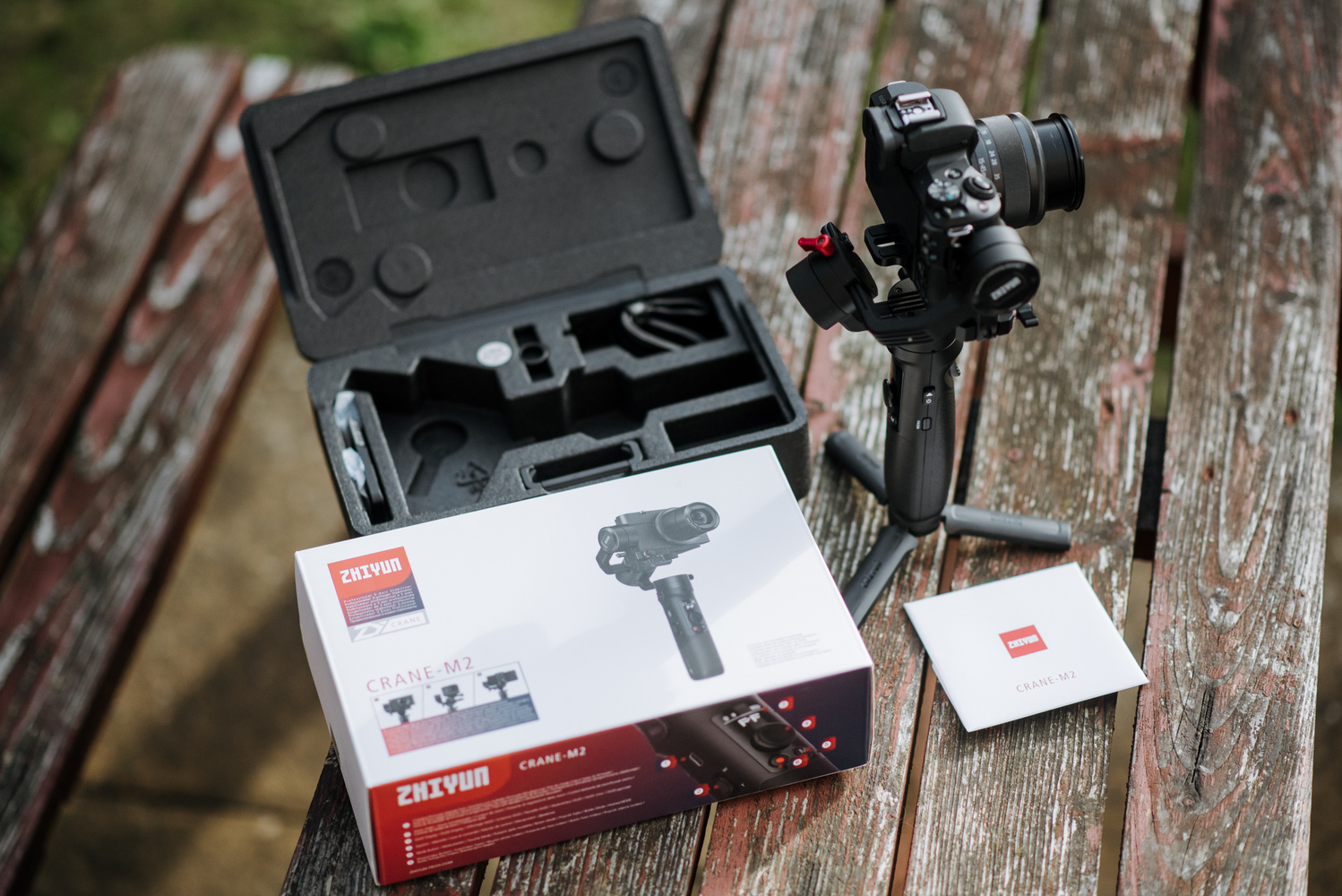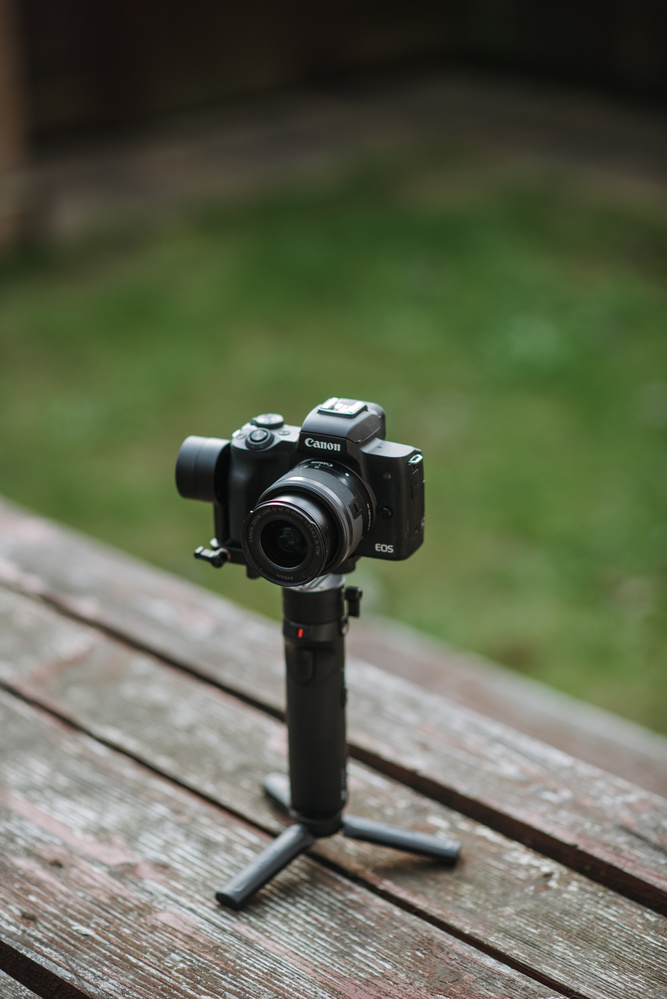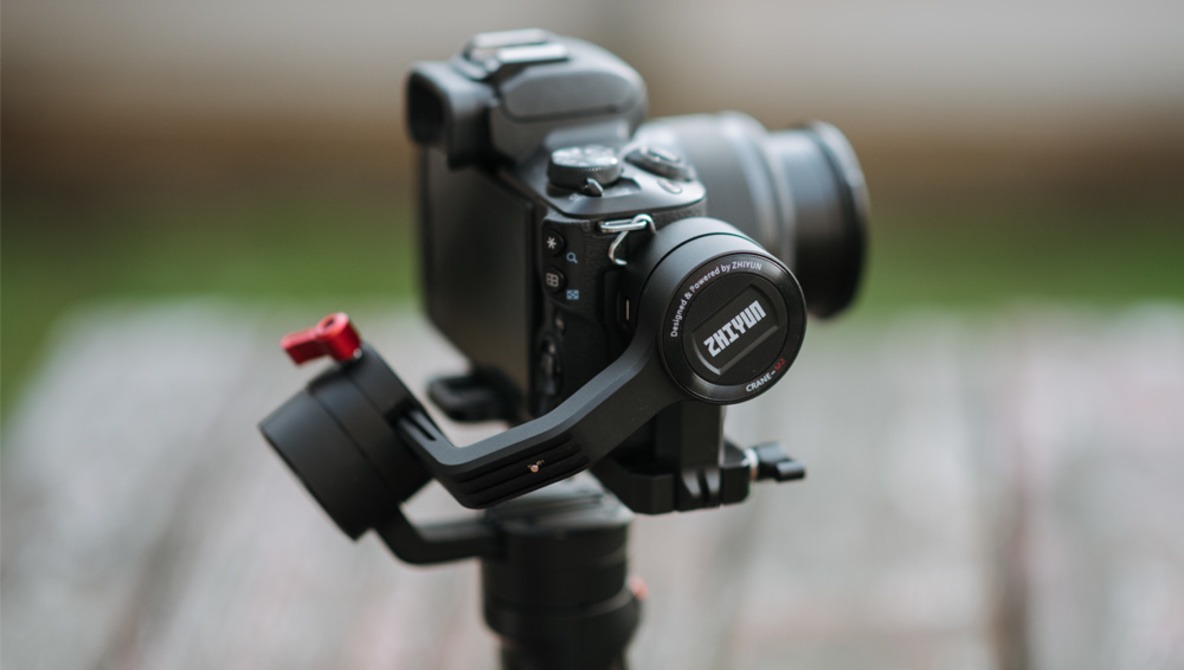If you are thinking of venturing into videography and looking for an entry gimbal, check out the compact ZHIYUN Crane M2, compatible with a variety of lightweight mirrorless, compact, and action cameras, as well as smartphones.
If you are relatively unfamiliar with filming equipment, as I am, ZHIYIN's Crane M2 handheld stabilizer looks very promising at the first glance. Using my travel-friendly Canon M50 with an EF-M 15-45mm f/3.5-6.3 IS STM lens, which places in the Crane M2 camera compatibility list, I was thrilled to try out a gimbal that looked like it could occupy a permanent place in my equipment bag. With the aim of recording some of our personal travels, as well as a mix of photography and lifestyle vlogging, this seemed to be the missing piece in the puzzle that is amateur videography. However, this gimbal certainly isn't for anyone whose camera isn't on the list, primarily because of the size and weight. So, if that's you, check out other options that can handle your heavier camera, such as Feiyu Tech Ak4000.

Specifications
With a tagline of making "every one a true filmmaker of their daily lives," ZHIYUN has brought a three-axis stabilizer, which is designed to perform for multiple devices and for users of all levels. As noted, before you purchase it, make sure you have thoroughly checked if your camera and lens combination will be supported by the gimbal. The list includes a variety of Sony, Panasonic, Canon, and GoPro cameras weighing up to 1.58 lbs (an action cam mount is sold separately). The majority of cameras on the list allow taking photos, start and stop recording, as well as a zoom in and out option when using the gimbal handle. Make sure you carefully study the compatibility list so you are not left disappointed, because certain cameras have limitations, (for example, unavailable zoom control on HERO5).
Crane M2 also has built-in Wi-Fi and Bluetooth. Wi-Fi allows you to connect to your camera for greater filming control, and the Bluetooth lets your camera sync up with the ZY mobile app for iOS and Android, which is available free to download and use. The app offers not just a variety of remote control options, but also contains tutorials and more.

Gimbal boasts 360° pan, 310° tilt, and 324° roll rotation through six different modes:
- PF (Pan Following Mode): allows the camera to pan as you turn the gimbal left and right
- F (Following Mode): camera will follow the handle movements
- L (Locking Mode): camera direction is locked
- V (Vortex Mode): for those 360° barrel shots
- POV (Full-Range POV Mode): allows 360° synchronous movement on all three axes
- GO (Go Mode): capture fast movement
Lastly, it has an OLED display, which shows battery level, connection status, and your selected shooting mode. Other features include a quick-release camera mounting system, scale marks, and memory locks to make balancing easier for different types of cameras, and you can attach the mini tripod on the bottom to use it as a stand or if it's easier, for you to grip and control it. Packaging also includes a hand strap, smartphone mount clip, Micro-USB Type-C Cable, mini tripod, and quick release plate. Currently, it retails for $269.
First Impressions
Although I had previously used gimbals before when assisting on a shoot, I had never actually taken a brand-new one out of the box and blindly followed the included instructions from the get-go. I would be lying if I said the whole setup process was easy. In fact, it was very much far from it. I found the included instructions very hard to follow, so inevitably, I ended up looking at ZY's own tutorials on their app. But, even during the most crucial moments of setting up, the tutorial would quickly rush past it or not show a close-up of the action at all. I found this very frustrating as a first-time user and had to resort to looking for video tutorials elsewhere just so I could finally start using the gimbal.

Although my Canon M50 is included in the compatibility list, unfortunately, the process was made harder by the fact that the viewfinder on this particular camera as well as on the Canon M5 may interfere with the roll axis motor under balanced position (which means I cannot use the Vortex mode). Once I had it set up and once I learned how it works, the initial instructions became clearer, but as someone who's never done anything like that before, it can be a very frustrating process. I struggled to connect the gimbal to my camera, which may be due to my camera's connection more so than the gimbal itself; however, that meant I was not able to start recording by using the start button on the gimbal grip.
The gimbal itself I found to be very easy and comfortable to hold. The weight of it is a massive bonus in my book. Having held heavier gimbals, I know how tiring it can become, but this one was very lightweight to use and to hold. To me, it just seems like a great option for those who travel often and don't want to carry heavy equipment. Once I attached the tripod bottom, I didn't take it off, because it is that light, and I prefer having the option to safely put it down on the ground or use it as a tripod for filming certain clips.
The biggest issue I had with using this gimbal was the different filming modes. First of all, before you go out shooting, you need to understand what each mode does and which one to use. This was my first mistake, when I thought I would just learn it on the go, but looking back, I would recommend thoroughly reviewing each mode first. Secondly, changing the modes can be confusing too, because you don't simply run through each mode by pressing one button. Instead, you use a combination of tapping the trigger back of the handle and using the "mode button" to find the mode you're looking for.

As for the footage, even though I had moments where I wanted to put it back in my bag and give up due to how the gimbal handled my specific camera, I still can't fault it too much when it comes to the quality of the actual material, which is something you've already come to expect from all gimbals coming onto the market nowadays. The weight of it makes it easy to use it for longer periods, and I enjoyed using it once it was all set up.
What I Liked
- Compact and lightweight, easy to pack and travel with
- The variety of shooting modes
- Decent battery life
- Appropriate price considering it supports smartphones and action cameras, as well as certain mirrorless models
- Suits beginners and vloggers
What Could Be Improved
- More thorough and beginner-friendly tutorials
- Easier and more logical way of choosing shooting modes
- Full compatibility for all cameras included in the list for a better filming experience

Conclusion
Although I did not have the best start when trying to stabilize my camera or when trying to connect it to Wi-Fi, I'd be happy to put that experience past me, because this gimbal could be a really useful piece of equipment so as long as it fits your style of shooting and more importantly, it fits with your camera. As someone who is by no means attempting to get into professional videography, I did want something that can help make my personal video or photography tutorials footage more dynamic, and I can see this gimbal doing just that. The quality of footage obtained would be sufficient for me and my needs, and I would consider bringing it with me on shoots to potentially add brief video footage to the final gallery, too.
With a $269 price tag, I can justify the price if I were to make the most of all it offers, such as different shooting modes and support for smartphones, actions cameras, and mirrorless cameras. As someone who'd be using only one mirrorless camera for the time being, which also happens to not have the full compatibility with all features this gimbal offers, I am slightly torn; however, if I owned one of the other cameras on the list, I wouldn't hesitate. This gimbal is well suited for those who use videography as an addition to their lifestyle or even business and less so for those who specialize in pro video work and need to use more substantial camera and lens combinations.
If you think this is something you want to add to your kit, you can order your Crane M2 here.






Nifty. I'm about to do a protest action, and told the orgnisers I can't film while walking (no IS, no gimbal).
This'd be great but my camera's too big!
Hey that is really smooth footage in your sample video - good result from the gimbal.